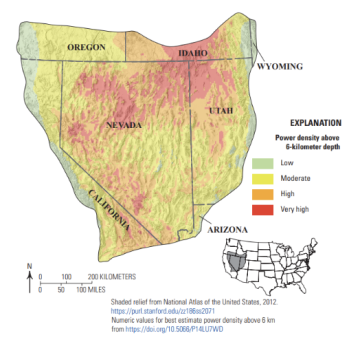A new assessment by the US Geological Survey (USGS) reveals that geothermal energy resources in Nevada’s Great Basin and nearby states could potentially generate up to 10% of the current US electricity supply. This marks a significant increase from geothermal’s current contribution of less than 1%.
The estimate is based on the assumption of large-scale commercial development and the continued advancement of technologies, especially those adapted from the geothermal and oil and gas industries.
Much of today's geothermal energy comes from hydrothermal systems—naturally occurring underground hot water systems. However, the real growth potential lies in enhanced geothermal systems (EGS), which use engineered techniques to extract heat from deep, impermeable rock layers. These systems can reach depths of up to 3.7 miles (6 km) and circulate water to capture and convert underground heat into electricity, according to the USGS.

The Great Basin region, covering parts of Nevada, California, Oregon, Idaho, Wyoming, and Utah, was historically important for geological mapping and resource exploration. Today, its geothermal potential is being re-evaluated using advanced technologies like artificial intelligence and machine learning to improve mapping and resource estimation.
This effort is part of a broader mandate under the Energy Act of 2020, which requires the USGS to assess geothermal energy potential across the entire US. As part of this mandate, the USGS developed new heat-flow and underground- temperature maps and updated methods to calculate how efficiently heat can be converted into electricity.
The next area to be assessed will be the Williston Basin in North Dakota.

